Collecting things and having nice objects to look at is something many of us love. However, when collecting items or having a hobby develops into hoarding tendencies, it can be a sign of mental health problems.
If a loved one, such as a partner or family member shows signs of a hoarding disorder, knowing how to assist them is crucial. At The Sparkle Gang, we want to help you recognise hoarding symptoms, find out how you can treat hoarding disorder in a loved one, and help them to seek treatment.
Hoarding is a mental health disorder characterised by excessive acquisition and difficulty discarding possessions. People hoard due to many reasons, including:
Understanding these reasons is important for effective treatment, which often involves therapies like cognitive-behavioural therapy (CBT) and medication.
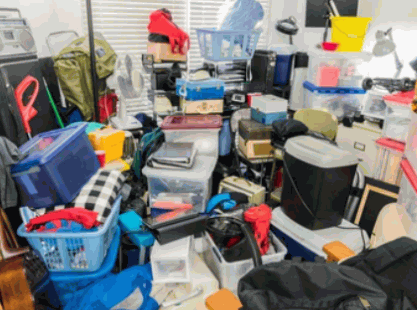
What's The Difference Between Clutter, Collecting And Hoarding?
The terms clutter, collecting, and hoarding describe different patterns of behaviour related to possessions:
Clutter: Clutter refers to a disorganised accumulation of objects that impairs the functionality or aesthetics of a living space. It involves having an excess of items that are not well-organised or kept in an orderly manner.
Collecting: Collecting involves acquiring and organising items of interest based on a specific theme or personal passion. Collectors take pleasure in their collections and often display or curate them in an organised and intentional manner.
Hoarding: Hoarding is a mental health issue characterised by persistent difficulty discarding possessions, leading to excessive accumulation and clutter. People who hoard have a strong emotional attachment to their belongings, especially those of sentimental value, and experience distress when considering disposing of them. We offer hoarder cleaning as a service.
While clutter and collecting are more common and generally manageable behaviours, hoarding represents a more severe and clinically significant condition that requires professional intervention.
Several common signs may indicate a hoarding disorder:
Persistent difficulty discarding: Individuals with hoarding disorder find it challenging to let go of possessions, even if they have little or no practical value. They may experience intense anxiety or distress at the thought of discarding items.
Excessive clutter: Hoarders have cluttered areas that make it difficult to use rooms for their intended purposes. Clutter may extend to all areas of the home, including furniture, countertops, and even hallways, rendering them unusable or unsafe.
Severe disorganisation: Possessions in a hoarder's home are typically disorganised, making it hard to categorise, sort, or find items. Lack of organisation contributes to the accumulation of more possessions over time.
Difficulty making decisions: Hoarders often struggle with decision-making, especially when it comes to discarding items. They may feel overwhelmed or paralysed by the thought of making choices about what to keep or discard.
Emotional attachment to possessions: Hoarders form strong emotional attachments to their possessions, perceiving them as extensions of their identity or sources of comfort and security. They may fear losing important memories or connections by getting rid of items.
Social isolation: Hoarding can lead to social withdrawal and isolation. Hoarders may feel embarrassed or ashamed about their living conditions, causing them to avoid inviting others into their homes or participating in social activities.
Impaired functioning: Hoarding significantly impairs daily functioning. Living areas become cluttered and unusable, leading to difficulties with basic activities like cooking, cleaning, and personal hygiene.
These signs, when present to a significant degree, may suggest the presence of a hoarding disorder.
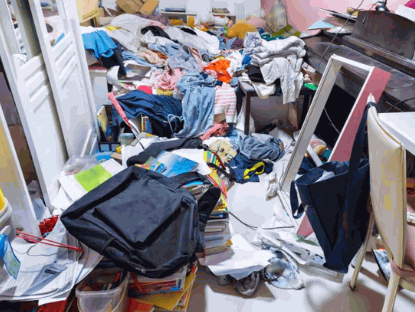
To better understand the extent of hoarding disorders in the UK, it is helpful to consider key statistics:
Hoarding disorder can pose various problems and concerns for individuals affected by it as well as family members, friends, or loved ones:
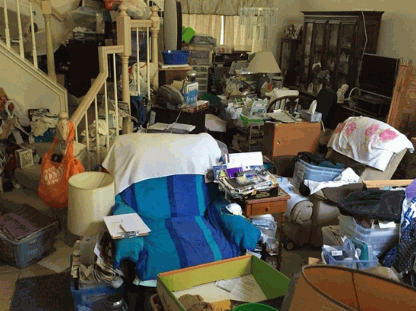
Critical problems for the individual with the hoarding disorder include:
Impaired living conditions: Excessive clutter and hoarding can render living spaces unsanitary, unsafe, and difficult to navigate, leading to health risks, falls, or accidents.
Social isolation and strained relationships: The shame and embarrassment associated with hoarding often lead to social withdrawal, strained relationships, and isolation from friends and family.
Emotional distress: Hoarders may experience significant emotional distress, anxiety, and depression due to their inability to manage possessions, maintain a functional living environment, or meet societal expectations.
Reduced quality of life: Hoarding can diminish the overall quality of life, impacting one's ability to engage in meaningful activities, enjoy hobbies, or maintain healthy routines.
The impact of a hoarding disorder can affect people around the individual, with the following factors being a concern:
Safety concerns: Living in a hoarded environment can pose safety risks for family members, such as blocked exits, fire hazards, and unsanitary conditions that may lead to health issues.
Emotional strain: Loved ones often experience frustration, helplessness, and stress when trying to address the hoarding issue. They may struggle to understand the hoarder's behaviour or feel overwhelmed by the responsibility of cleaning and organising the living space.
Relationship strain: Hoarding can strain relationships due to conflicts arising from disagreements about the clutter, difficulty visiting or staying in the hoarded home, or concerns about the individual's well-being.
Financial burden: Hoarding may result in excessive spending on unnecessary items, storage units, or home repairs. This financial strain can affect not only the hoarder but also family members who may be responsible for shared expenses or the individual's care.
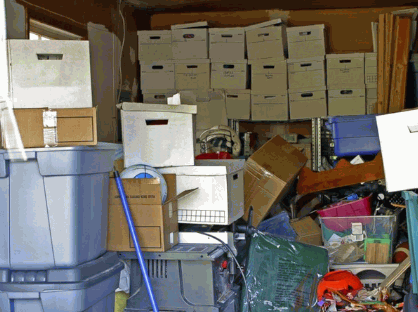
Hoarding behaviours can be categorised into stages, although the progression may vary for each individual. The stages of a hoarding problem are generally described as follows:
The individual begins accumulating possessions, often driven by a desire to obtain items they perceive as valuable, useful, or meaningful. The acquisition may involve excessive shopping, collecting free items, or an inability to discard anything.
Clutter starts to accumulate in the living space, and it becomes increasingly challenging to maintain an organised environment. Items may be stored haphazardly, and the clutter may begin to impede functionality or safety within the home.
The individual experiences increasing difficulties with organising possessions. They may struggle to categorise or catalogue items, make decisions about where to store them, or maintain any semblance of order. The clutter continues to accumulate, making it harder to find or access belongings.
Strong emotional attachments develop towards possessions, often accompanied by anxiety or distress at the thought of discarding them. The individual may associate personal memories, security, or identity with their belongings, leading to resistance to letting go of items.
These behaviours reach a compulsive hoarding point where living spaces are severely cluttered, making them uninhabitable or dangerous. The accumulation of possessions significantly interferes with daily functioning, such as cooking, cleaning, or even moving around the home, causing a health risk. Social isolation, distress, and other mental health issues are often prominent at this stage.
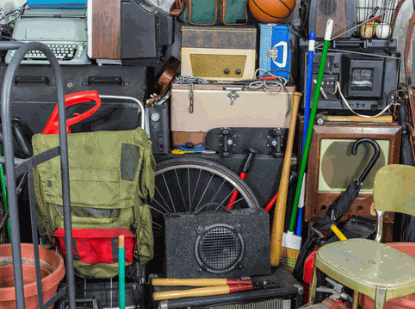
If you suspect that someone you know is hoarding, here are some steps you can take:
Educate yourself: Learn about hoarding disorder to gain a better understanding of the condition, its causes, and available treatment options. This knowledge will help you approach the situation with empathy and provide appropriate support.
Express concern and empathy: Approach the individual with empathy, expressing your concern for their well-being and offering your support. Avoid judgment or criticism, as this can be counterproductive and increase defensiveness.
Encourage professional help: Suggest that the person seek professional help from mental health specialists experienced in hoarding disorder. Provide information about therapists, psychologists, or hoarding intervention programs that can offer guidance and support.
Offer practical assistance: Offer to help in practical ways, such as assisting with organising or decluttering sessions. However, respect the individual's autonomy and do not force them to discard items against their will. Support them in making small, gradual steps towards organising and decluttering.
Connect with support networks: These support groups can provide a supportive environment where they can share experiences, gain insights, and learn coping strategies.
Maintain open communication: Keep the lines of communication open and let the individual know that you are there for them. Listen actively, validate their feelings, and encourage them to express their concerns and struggles.
Respect boundaries: Recognise that hoarding is a deeply personal issue, and individuals may not be ready or willing to address it immediately. Respect their boundaries and progress at their own pace, without exerting pressure or judgment.
Listen actively: Provide a listening ear and create a safe space for them to express their thoughts, feelings, and struggles related to hoarding. Practice active listening, validating their emotions and experiences.
Maintain confidentiality: Respect the individual's privacy and keep any information shared about their hoarding disorder confidential unless there are safety concerns that require immediate action.
Patience and persistence: Understand that addressing hoarding takes time and persistence. Be patient with the individual's progress and setbacks, and continue to offer support and encouragement throughout the journey.
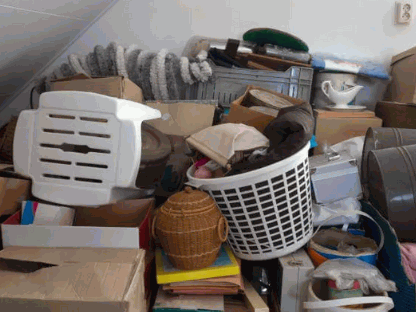
When attempting to help someone with hoarding disorder, it is important to be mindful of certain "don'ts" to ensure your approach is effective and respectful. An important thing to avoid is forcing a clean-up operation. While you might think this is helpful, cleaning the space yourself or forcing the individual to clean often leads to greater problems in the long term.
Please consider this, and the following don’ts when it comes to helping someone with a hoarding disorder:
Don't force or pressure: Avoid pressuring or forcing the individual to declutter or get rid of possessions against their will. Respect their position and allow them to make decisions about their belongings at their own pace.
Don't criticise or judge: Refrain from criticising or judging the individual for their hoarding behaviour. Negative comments or blaming can lead to defensiveness and hinder the willingness to seek help.
Don't invade their space: Respect the individual's personal space and boundaries. Avoid entering their home or handling their possessions without their explicit permission. Always seek their consent before taking any action.
Don't enable hoarding behaviours: While providing support, avoid enabling hoarding behaviours. For example, refrain from providing additional storage space or facilitating excessive acquisition of items.
Don't disregard their emotional attachment: Recognise and acknowledge the emotional attachment the individual may have to their possessions. Dismissing or trivialising their feelings can create resistance and hinder progress.
Don't focus solely on decluttering: While decluttering is important, it is not the only aspect of treatment. Avoid solely focusing on removing possessions without addressing the underlying emotional and cognitive aspects of hoarding disorder.
Don't neglect self-care: Supporting someone with a hoarding disorder can be emotionally challenging. Take care of your well-being by setting boundaries, seeking support from others, and practicing self-care to avoid burnout.
Don't give up or become frustrated: Progress in overcoming hoarding disorder can be slow and challenging. Avoid becoming frustrated or giving up on the individual. Continue to offer support, understanding, and encouragement.
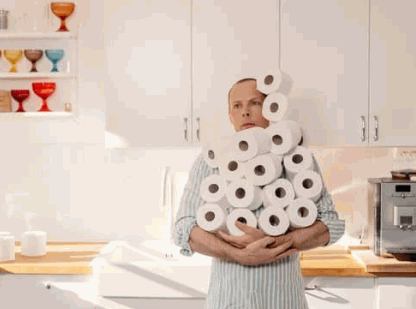
Hoarders may perceive their behaviour as rational or necessary, or they may have difficulty understanding the negative impact it has on their daily life and well-being.
The lack of insight can stem from several factors, including:
Emotional attachment: Hoarders often develop strong emotional attachments to their possessions, perceiving them as sources of comfort, security, or personal identity. This emotional attachment can cloud their judgment and make it challenging to recognise the excessive nature of their behaviour.
Cognitive distortions: Hoarders may have cognitive distortions or thinking patterns that contribute to their lack of awareness. They may overvalue items, fear losing important information or memories associated with possessions, or hold beliefs that hinder their ability to discard items.
Normalisation of the behaviour: Over time, this behaviour may become normalised for the individual, particularly if they have lived with clutter and hoarding for an extended period. They may believe that their behavior is common or acceptable, making it difficult to perceive it as problematic.
Minimisation or avoidance: Some hoarders may minimise the impact of their behavior or avoid confronting the problem altogether. They may downplay the clutter or dismiss concerns raised by others, further hindering their awareness of the issue.
Hoarding disorder is a distinct mental health condition that is separate from obsessive-compulsive disorder (OCD). While hoarding behaviours can co-occur with OCD in some cases, they are considered separate diagnoses.
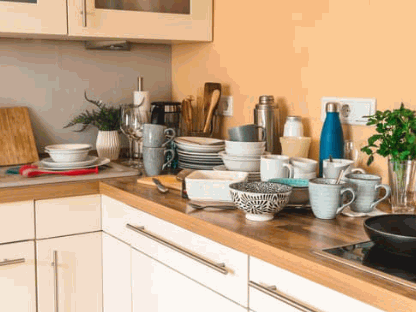
As a hoarding disorder is a serious and recognised condition, it is best to seek assistance when you help a loved one dealing with mental health conditions. The following local resources and support groups are worth considering:
People with hoarding disorder, and their loved ones, require support. This is a serious mental health problem that when left unchecked, can lead to significant mental illness problems. Knowing how to approach the topic, and how to encourage a loved one to seek professional treatment is crucial.
While you are here, why not dive into our blog section and read up on our posts on what is fogging and the ultimate pub cleaning checklist.